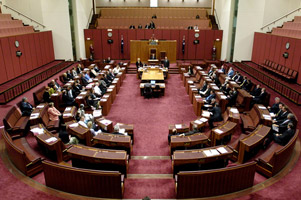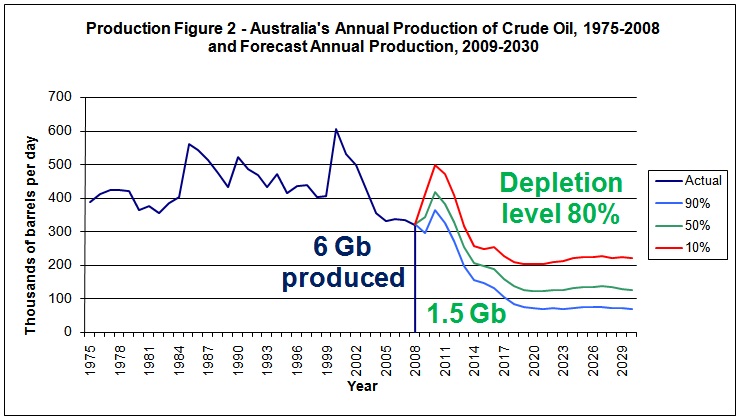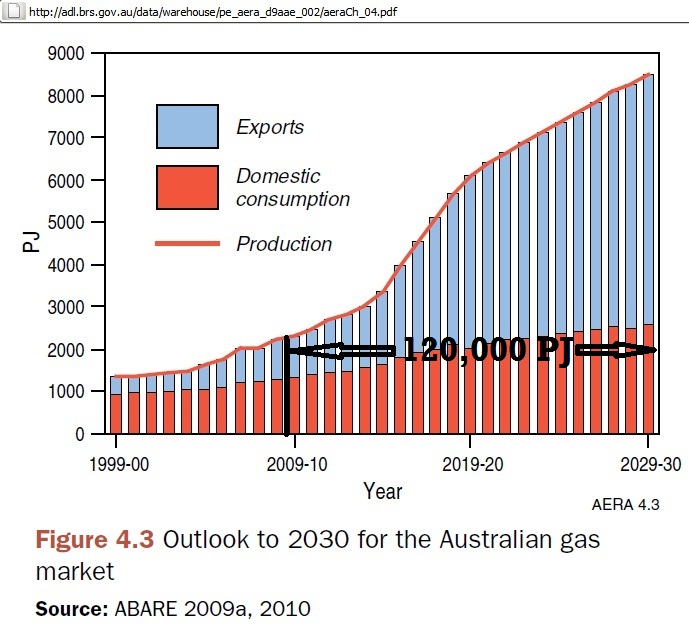 Australian Senators continue to ignore oil depletion facts
Australian Senators continue to ignore oil depletion facts
Extract from the Hansard, 14/9/2011
Senator MARK BISHOP (Western Australia) (17:20): ……….With our vast resources and rapidly expanding oil and gas sector we are clearly the oil and gas capital of Australia…..Further, we do have the potential to look beyond the horizon. We are uniquely placed to be industry leaders in the South-East Asia region. It is an opportunity we should grasp. It is an ambition we should all share.
Senator JOYCE (Queensland—Leader of The Nationals in the Senate) (17:29): ……..One is the export of a product to try and bring strength to the Australian economy, to protect the Australian economy, to keep it vibrant and to extend our capacity to earn money. That is one thing we should be supporting.
http://www.aph.gov.au/hansard/senate/dailys/ds140911.pdf
Senators should know better. They were warned about peak oil already in 2006 by Dr. Bakhtiari
http://www.aph.gov.au/hansard/senate/commttee/S9515.pdf
What really matters is crude oil. So let’s have a look at the website of Geoscience Australia.
http://www.ga.gov.au/products-services/publications/oil-gas-resources-australia/2009.html
and do some simple math:
STEP 1: Download this XLS file for 2009
http://www.ga.gov.au/__data/assets/excel_doc/0020/26921/ogra-2009-all.xls
STEP 2: Take from work sheet “Reserves – Figure 2”, cell F60 = 216 GL remaining (crude) oil (commercial PLUS non-commercial)
STEP 3: Take from work sheet “Production – Table 2”, cell M20 = 966.6 GL total cumulative production of crude oil at end 2009
STEP 4: Calculate:
Depletion level = cumulative production end 2009 / (cumulative production end 2009 + remaining reserves) = 966.6 GL / (966.6 GL + 216 GL) = 81.7%
Using work sheet “Production – Figure 2” and taking a 50% probability of production forecasts we get:
Even if we took the highest estimate (10% probability) the depletion level is 6/(6+2.1) = 74%
So we have declining crude oil production and a depletion level between 74% to 80%. Is that “vast”?
And how about the vast gas resources?
Let’s have a look at chapter 4 on gas of the Australian Energy Resource Assessment:
https://www.ga.gov.au/products/servlet/controller?event=GEOCAT_DETAILS&catno=70142
EDR= Economic Demonstrated Resources (2P = proved and probable)
So we see that in just 20 years Australia will consume and export the equivalent of its total conventional, economic demonstrated gas resources.
What if subeconomic and inferred gas resources remain sub-economic because of the global debt crisis?
Is that vast, lasting for many decades as the public is repeatedly being told?
No wonder the gas industry is pushing for coal seam gas. But CO2 concentrations would go up by 50 ppm from burning 50% of unconventional global gas resources
as shown in the above graph from NASA climatologist James Hansen
http://www.columbia.edu/~jeh1/mailings/2011/20110902_WhiteHouseAndTarSands.pdf
Is that a path to a low carbon future as discussed at the same time in the carbon tax debate of the House of Reps? If gas were to reduce emissions where are the intergovernmental agreements to leave the energy-equivalent coal in the ground, for good? The way things are going, unconventional gas will just be stacked on top of coal, thereby INCREASING emissions.
8/3/2010
NASA climatologist James Hansen at Sydney Uni: “Australia doesn’t agree now that they got to stop their coal, but they are going to agree. I can guarantee you that within a decade or so because the climate change will become so strongly apparent that’s going to become imperative”
http://www.usyd.edu.au/sydney_ideas/lectures/2010/professor_james_hansen.shtml
No matter how you look at the convergence of peak oil and global warming, the delusiveness of Parliamentary decisions couldn’t be more obvious
See also:
11/7/2011 WA crude oil depleted by 75%
http://crudeoilpeak.info/wa-crude-oil-depleted-by-75-pct



